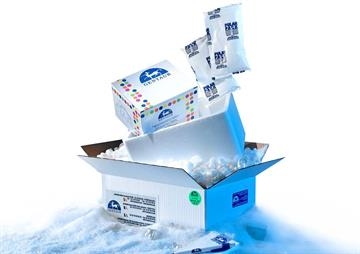Human VEGF121 Recombinant Protein

Human VEGF121 Recombinant Protein
520.12 €
In Stock
quantity
product details
Catalog number: 209 - 300-072
Product Category: Business & Industrial > Science & Laboratory
ReliaTechGentaur
Size: 20 µg
Related Products
96-962
VEGF121 Recombinant Protein
Vascular endothelial growth factor (VEGF), also known as vascular permeability factor (VPF) and VEGF-A, and is a member of the platelet-derived growth factor (PDGF)/vascular endothelial growth factor (VEGF) family and encodes a protein that is often found as a disulfide linked homodimer. This protein is a glycosylated mitogen that specifically acts on endothelial cells and has various effects, including mediating increased vascular permeability, inducing angiogenesis, vasculogenesis and endothelial cell growth, promoting cell migration, and inhibiting apoptosis. Alternatively spliced transcript variants, encoding either freely secreted or cell-associated isoforms, have been characterized. Alternatively spliced isoforms of 121,145,165,183,189 and 206 amino acids in length are expressed in humans. VEGF165 appears to be the most abundant and potent isoform, followed by VEGF121 and VEGF189. VEGF121 is the only form that lacks a basic heparinbinding region and is freely diffusible. Mouse embryos expressing only the corresponding isoform (VEGF120) do not survive to term, and show defects in skeletogenesis. Human VEGF121 shares 87% aa sequence identity with corresponding regions of mouse and rat, 93% with feline, equine and bovine, and 91%, 95% and 96% with ovine, canine and porcine VEGF, respectively. VEGF121 induces the proliferation of lymphatic endothelial cells. The lymphangiogenesis may be promoted by upregulation of VEGF121, which may in turn act in part via induction of VEGF-C.
1201.45 €
40-612
VEGF121 Recombinant Protein
VEGF is a potent growth and angiogenic cytokine. It stimulates proliferation and survival of endothelial cells, and promotes angiogenesis and vascular permeability. Expressed in vascularized tissues, VEGF plays a prominent role in normal and pathological angiogenesis. VEGF signals through three receptors; fms-like tyrosine kinase (flt-1), KDR gene product (the murine homolog of KDR is the flk-1 gene product) and the flt4 gene product. Due to its increased acidity, VEGF121 circulates more freely than other VEGF forms, which bind more tightly with vascular heparin sulfates. Recombinant human VEGF121 is a 28.4 kDa disulfide-linked homodimeric protein consisting of two 121 amino acid polypeptide chains.
851.8 €
40-163-0002mg
VEGF121 Recombinant Protein
VEGF is a potent growth and angiogenic cytokine. It stimulates proliferation and survival of endothelial cells, and promotes angiogenesis and vascular permeability. Expressed in vascularized tissues, VEGF plays a prominent role in normal and pathological angiogenesis. VEGF signals through three receptors; fms-like tyrosine kinase (flt-1), KDR gene product (the murine homolog of KDR is the flk-1 gene product) and the flt4 gene product. Due to its increased acidity, VEGF121 circulates more freely than other VEGF forms, which bind more tightly with vascular heparin sulfates. Recombinant human VEGF121 is a 28.4 kDa disulfide-linked homodimeric protein consisting of two 121 amino acid polypeptide chains.









